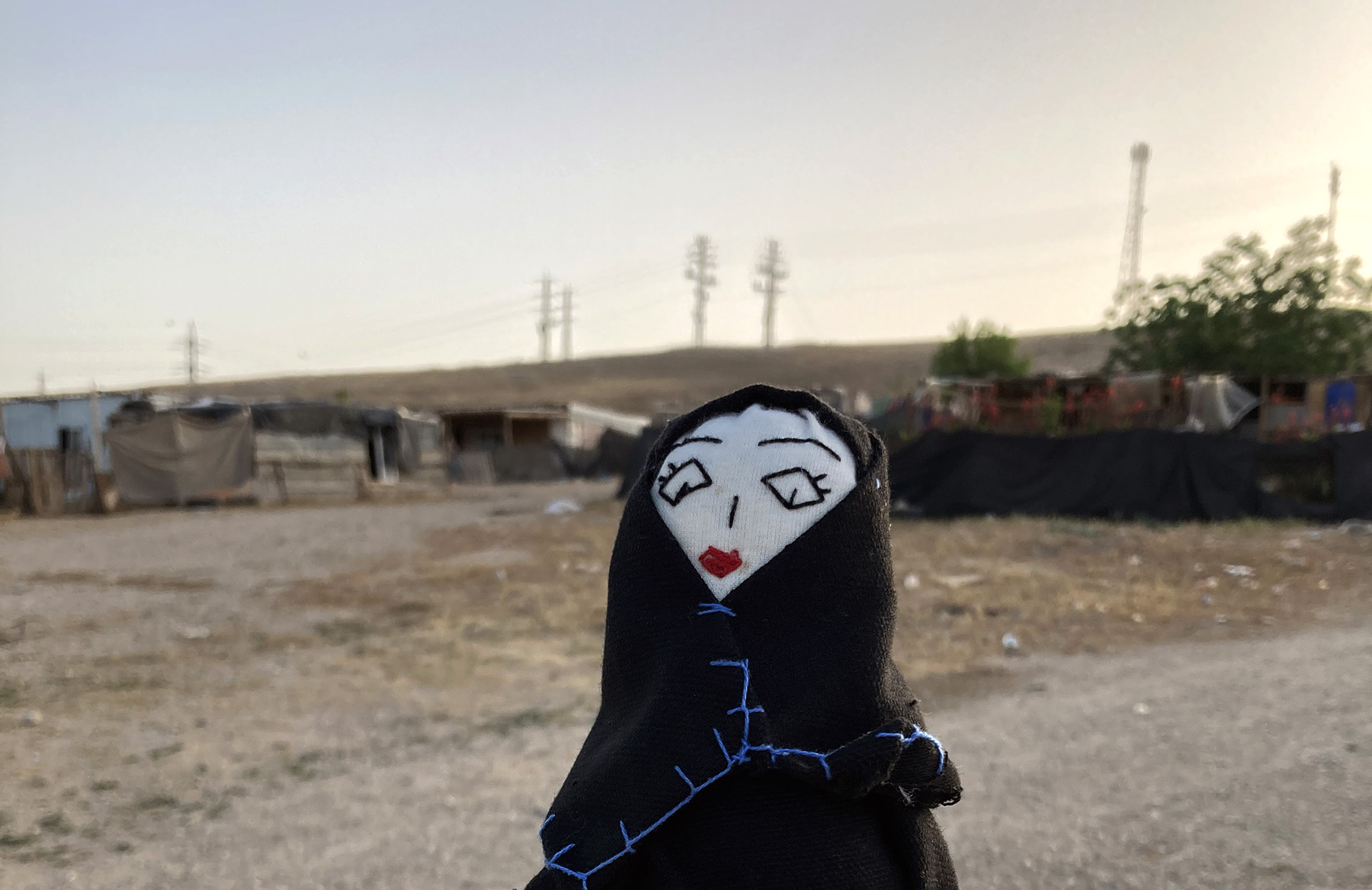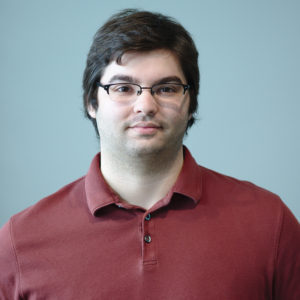Part of the ongoing “Diaspora English” series, Daniel Crasnow reports on a year spent teaching in Israel during the coronavirus pandemic. You can read other Diaspora English articles here. Featured photo taken by the author of a doll made by the women of Khan Al-Ahmar.
My tour group began by meeting in Tel Aviv on a small, private bus, early in the morning. Our host for the day, Benzi Sanders, introduced himself and the organization he was representing: Breaking The Silence, an organization of former Israeli soldiers who have “taken it upon themselves to expose the Israeli public to the reality of everyday life in the Occupied Territories”. This exposure includes testimony from soldiers who have seen and participated in the cruelties of the occupation and, in our case, giving tours to groups of Israelis and tourists who want to learn more about the occupation. As the Jewish Diaspora Education Coordinator for the organization, Benzi is in charge of leading tours like this.
Our first stop was at Baruch Goldstein’s grave in Kiryat Arba, where a beautiful stone square bearing his name culminates in a (now modest, but once extravagant) grave where the genocidal maniac rests. His gravestone says he rests “holy” and with “clean hands”. As we walked away, I couldn’t help but jump on top of his tombstone, trying to kick the word kadish, or “holy”, off the engraved marble stone.
The next stage of the tour brought us to the occupied part of Hebron, right in front of Tomb of the Patriarchs, where Baruch Goldstein’s massacre led to a series of “security measures” that have continued to plague the city for the last twenty-five years, leading to its near total abandonment. We stood at the Jewish entrance to the holy sight, guarded by Israeli forces, its polished stone stairs guided by green gardens from the road to the holy place. Two blocks down, the Arab entrance to the site held the same cold, stained, and dirty stones closed in by concrete buildings, seeming to miss the sky. Arabs are banned from the Jewish entrance, Jews from the Arab one. A block further, we passed another Israeli checkpoint, this one blocking the street ahead from Arab traffic, as an Arab merchant, who had been trying to peddle us bracelets with the Palestinian flag, fell back, knowing he was not allowed to go any further, and shouted after us as we continued on our way.
Down the street, we passed a march of Jewish women, settlers all, shouting that Israel would live forever. That this would always be the Jewish state. That they would never give up their home in Hebron and beyond. When they passed our merchant friend, though, their chant changed: “Israel will always be the Jewish home” became “Israeli will only be the Jewish home”. We passed them quickly enough, avoiding them as best we could. We had been warned earlier about engaging with the protesters, and Breaking The Silence had a reputation in this area. Once, Benzi said, Breaking The Silence was sued for assault when a member of one of their tours gave a protester a handshake.
From the protest, we passed the old bus station that was now being converted into a military base for the occupiers. Benzi explained the legal complexities of this place: in order to obtain the land, Israel had to argue that it was necessary for the sake of Israel’s security. But when the land was then given to settlers instead of being used for public security purposes, the “security” argument became irrelevant and, as such, the former Palestinian landowners gained a legal avenue to charge the Israelis with giving false pretenses for repatriating their property. These charges continue today.
From there we passed a series of markets: a meat market, a spice market, a vegetable market, and a gold market, all of which once bustled with life and activity, but which now stood quiet, abandoned, and looted clean as they had for the last many years.
“The people who once worked in these markets have long since moved out,” Benzi told us. “They’ve found new places to sell in the rest of Hebron, since they weren’t allowed to do it here.”
Next to the gold market, I saw the only sign of wealth in this part of Hebron; Beit Romano Yeshiva, a house of Talmudic study, towered over the nearby buildings, its fences and gates guarding religious students as they hurried into the central building. Below us, the market remained trashed and abandoned in the shadow of the Yeshiva, providing visceral evidence of what religious and ideological Jewish zealotry had done to this once bustling place.
~~~
Our next stop brought us to Khan Al-Ahmar, a poor Palestinian village in the West Bank which is sometimes compared with Shiekh Jarrah. The village sits next to two Israeli settlements, and in 2018 the Israeli High Court of Justice determined that the residents of the village could be evicted from their homes. Residents of the village had lived there since 1948, after being evicted from the Negev. They remained under Jordanian control until 1967, when the new village in its current West Bank location returned to Israeli hands. This village was never recognized by the Israeli government, and settlement expansion throughout the 1970s culminated in the village land being given to Israeli settlers. The Israeli settlers began trying to force the Bedouin residents of the village out.
This all came to a head in 2009, when an international organization used tires and mud to build a school for Khan Al-Ahmar. This new building was considered illegal under Israeli zoning law, as the village itself goes unrecognized and, according to the Israelis, the land belongs to the settlements nearby. This “violation” led to Khan Al-Ahmar being slated for demolition. This was, of course, challenged in court. In 2018, the Israeli High Court of Justice sided with the Israelis, and set the village to be demolished, until international pressure from the UN, International Criminal Court, European Parliament, Amnesty International, and others rallied behind the village, and stated that its demolition would amount to a war crime. The demolition has been on hold since, though right-wing Israeli politicians still reference the destruction of Khan Al-Ahmar as one of their political goals.
The village is poor, plain and simple, dominated by temporary housing that didn’t trigger the Israeli ‘illegal building’ accusation until the school was built, which became the first “permanent” structure in the area. There is little AC or running water. There are no shops. Most of the men work outside of the village, and the women stay home and care for the children. This traditional family structure universally dominates the village, though it has received a little bit of push back from a surprising source— a group of international volunteers, women all, who taught these women to sew dolls, which they could then sell for money of their own.
The dolls are beautiful and, like the Yeshiva and the gold market, they stand in stark contrast to the temporality and destruction around them. I bought one for fifty shekels. Right now, it remains in my Nazareth room.
~~~
Back in Nazareth that night, I visited some friends of the program, who hosted me and my housemates for dinner. Over the night, we reviewed our thoughts on teaching, traveling, and Israel, and our conversation culminated with a discussion on some of the repairs we were undertaking around the apartment, and the frustration we all felt due to the delays we were experiencing.
“Who’s the repair man?” the friend asked.
“I don’t know him. He’s from the program.”
“Well, does he do the job well, or… what’s it called…”
“half-assed” I responded, “Or lazy.”
“Hm. In Israel, we call it ‘Doing Arab work’. That’s just what we call it.” He said.
~~~
I’m always left to wonder how much people know, and how much they don’t. I’m usually cynical of missions like Breaking The Silence because, in many ways, I am simply cynical of humanity. I often feel that Breaking The Silence and similar missions are trying to tell people what they already know. That most people simply see this and shrug. They accept that this is the world, and they don’t lose a night’s sleep over it. In most cases, that has proven true over and over as an ideology of peace has been undercut not by those who want war, but by those who are content to live with the current world. Breaking The Silence’s mission was undercut in this way. The idea of peace between Israel and Palestine was similarly undercut during the conflict, and has continued to be undercut in every day since.
I wonder if the success of Zionism in establishing a Jewish state was the beginning of Zionism’s downfall. If this ideology of self-determination, peace, and ultimate Utopia was corrupted by every victory, since it became easier and easier for Zionism to reject the hard work of progress after it found such incredible success. I hope not. I hope it is possible to be successful and still continue developing with the same zeal that brought us that earlier success. But right now, Hebron stands abandoned because of what the allies of my Zionist beliefs did, and it is becoming harder and harder for me, as for so many others, to argue that the actions of those allies are not Zionism too.

